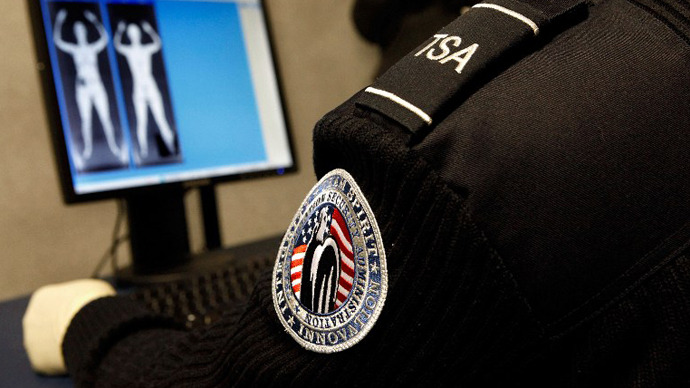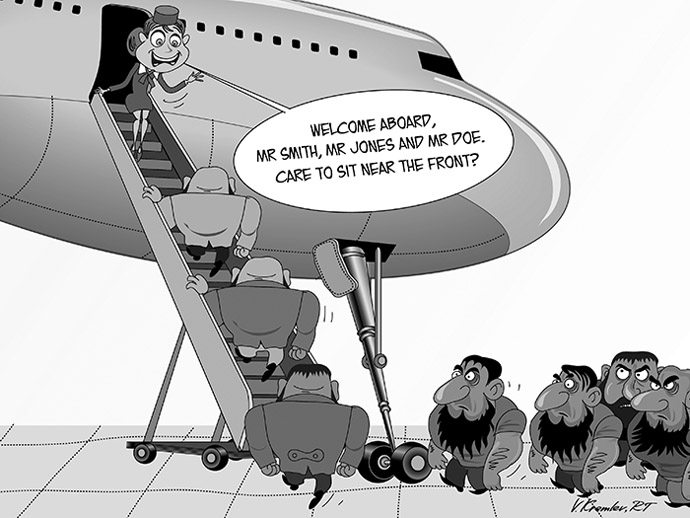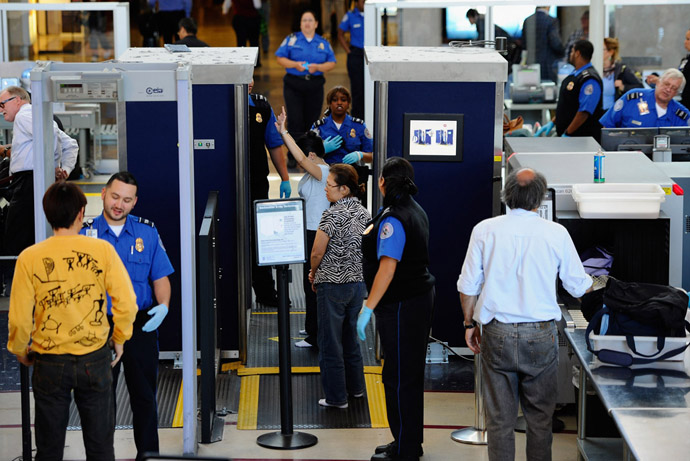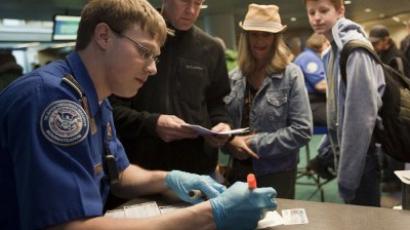Terror suspects eluded no-fly list, allowed on US commercial flights

An undetermined number of the US terror suspects who opted to cooperate with the government have dropped off the federal no-fly list after joining the witness protection program, taking new names, insists a US Justice Department report.
For over a decade since the 9/11 attacks, the federal US witness protection program (WITSEC) was not sharing enough information on its participants with the FBI-managed Terrorist Screening Center, maintains the report.
The Center, responsible for the federal no-fly list, therefore has been unable to update its files, while the US officials believe the no-fly list being an essential tool to preventing attacks similar to those made on the World Trade Center buildings in New York and the Pentagon in Washington on September 11, 2001.
The inspector general's report said ”a small but significant number” of suspects actually used commercial flights, but refrained from announcing how many exactly.

“We found that the department was not authorizing the disclosure to the Terrorist Screening Center of the new identities provided to known or suspected terrorists,” the report said. New documents not registered in the FBI databases made it possible for known or suspected terrorists “to fly on commercial airplanes in or over the United States and evade one of the government's primary means of identifying and tracking terrorists' movements and actions,” the report concluded.
It states that the Justice Department does not “definitively know” today exactly how many known or suspected terrorists are being protected by the federal government.
As of May, 2012, about 700 individuals, mostly former criminals, were in the federal witness protection program. Now it appears that some of them should have been on the no-fly list, but have not been included there due to getting new names and documents.
The problem emerged in 2012, when it became known that at least two suspected terrorists eluded US law enforcement and slipped past the no-fly list onto commercial flights, revealed a new report from the US Department of Justice’s inspector general.

According to the report, those two testified against terrorists they had been working with in exchange for protection in the federal witness security program.
“In July 2012, the USMS stated that it was unable to locate two former WITSEC participants identified as known or suspected terrorists,” the inspector general wrote, “and that through its investigative efforts it has concluded that one individual was and the other individual was believed to be residing outside of the United States.”
The US Marshals Service (USMS), which oversees WTSEC, earlier failed to turn over the hidden identities of those two - unidentified by name - to the Transportation Security Agency (TSA) for inclusion on the federal no-fly list, thus creating a security risk, the report said. The officials insist that every person entering the witness protection program is thoroughly screened by the USMS anyway.
Justice Department officials also said that the FBI has not identified any specific threat to public safety in connection to protected witnesses.
The Republican chairman of the House Judiciary Committee, Robert W. Goodlatte of Virginia promised to hold a hearing on this “outrageous problem”, the New York Times reports.
After the inspector general's office started its inquiry, the witness protection program reportedly changed policy and starting from May 2012 agreed to share information on former terrorism suspects.
Justice Department officials maintain that only two former terror suspects joined the witness protection program over the last six years.
Still, the inspector general was careful to note that the
testimony garnered from the witnesses have “provided invaluable
and critical information and testimony,” including the 1995
Oklahoma City bombing and 2007 attempt to blow up fuel tanks at
John F. Kennedy International Airport in New York.














